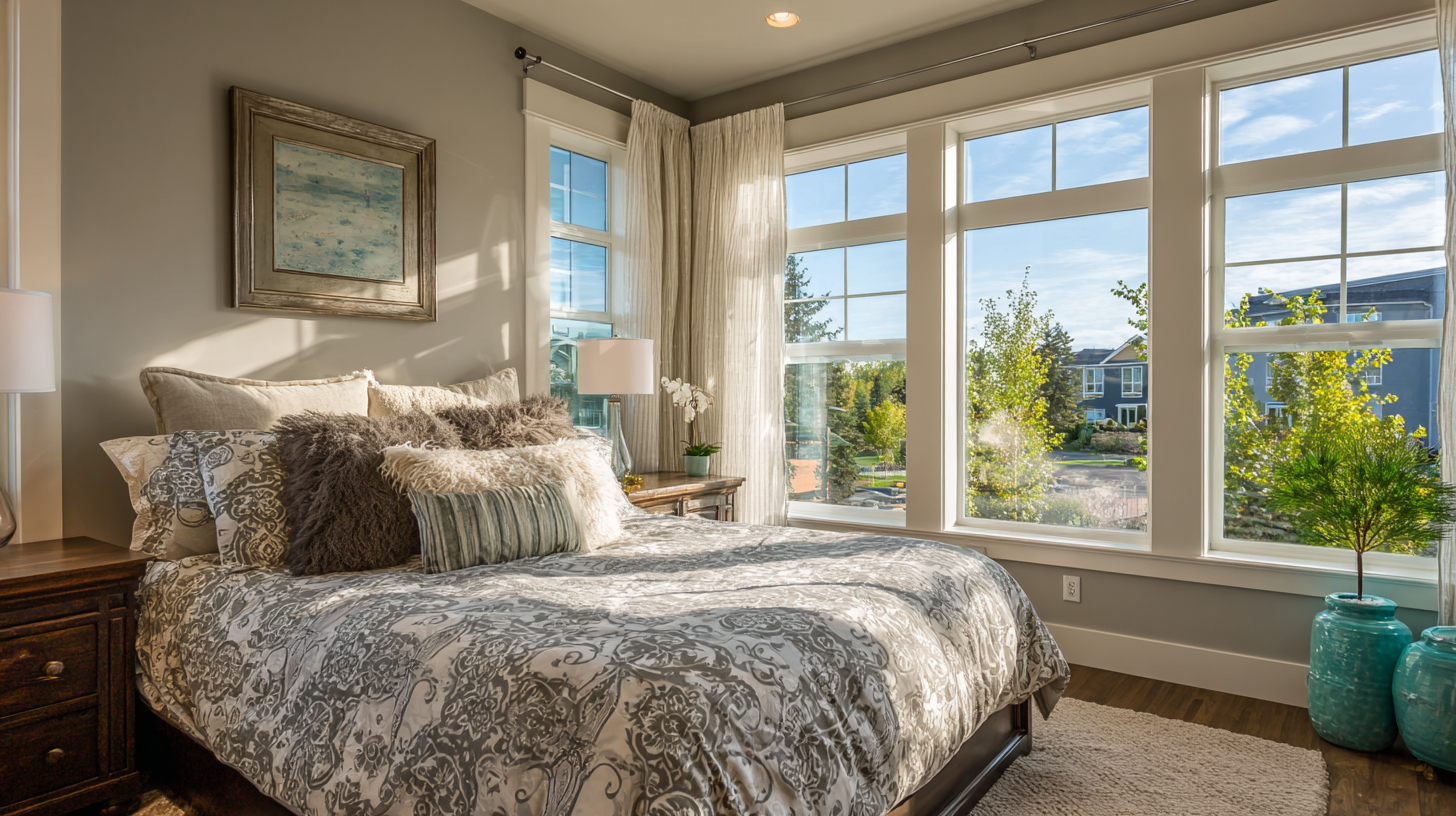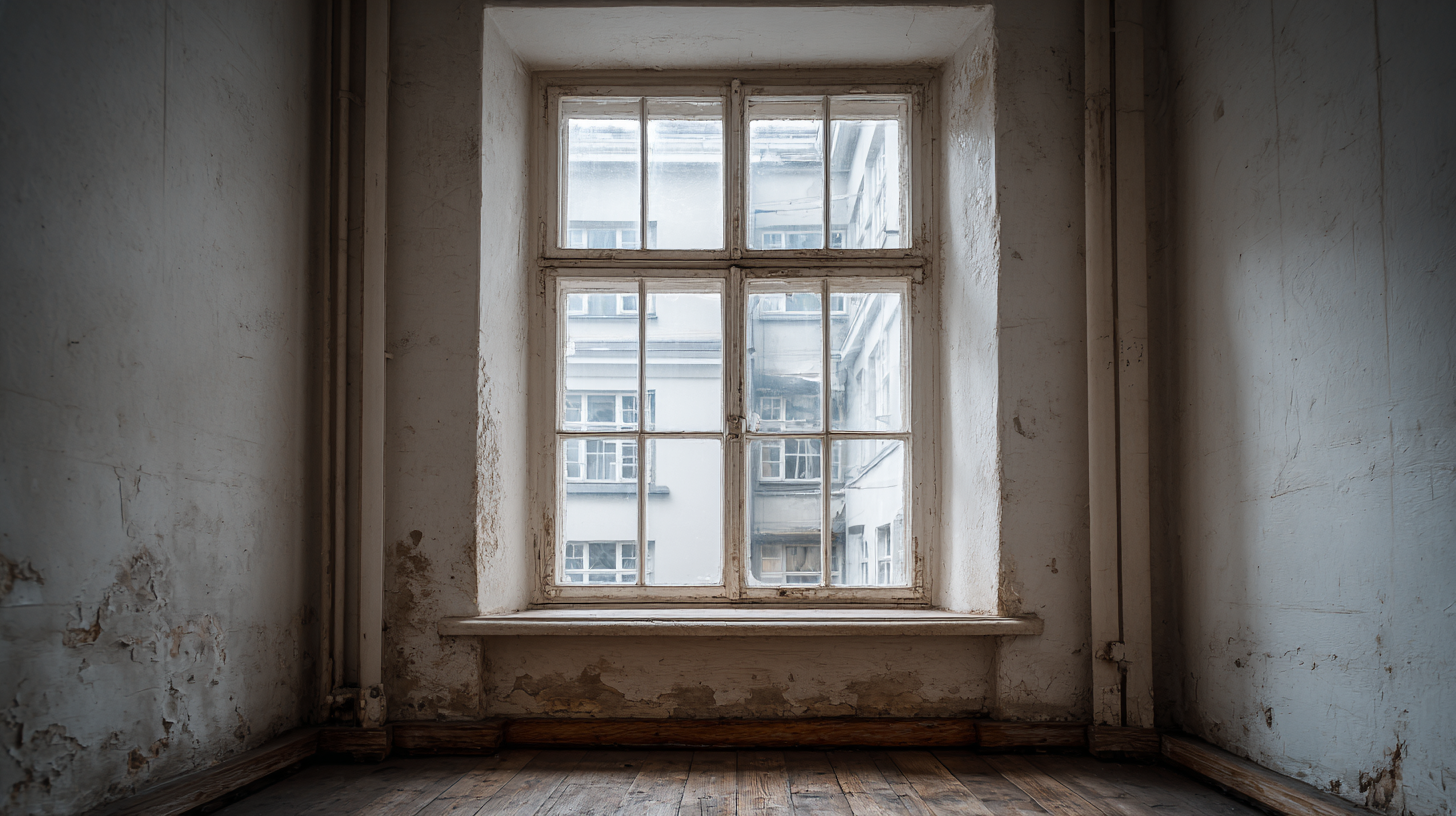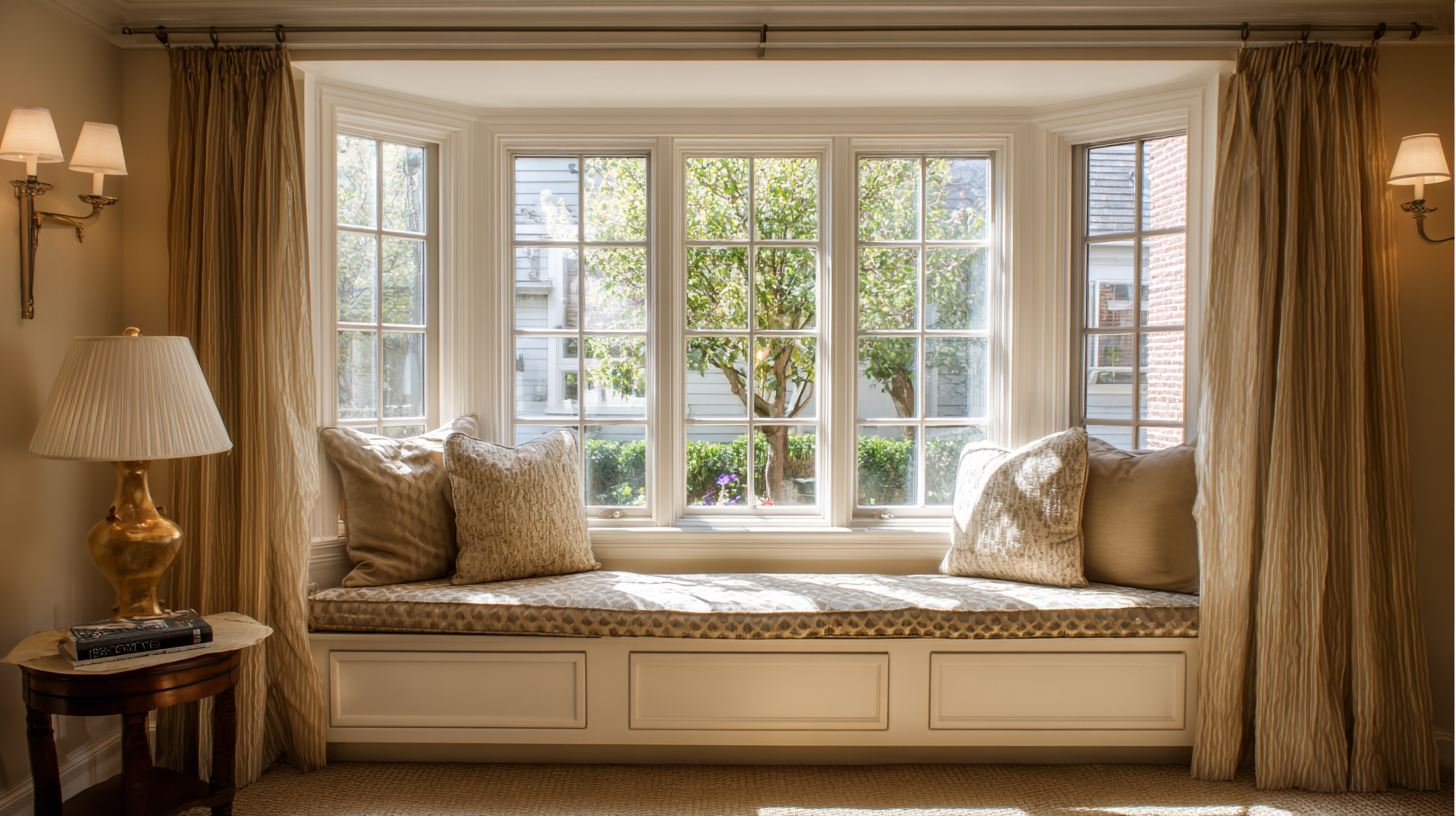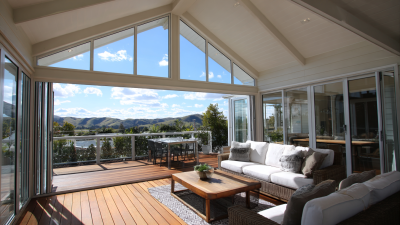10 Best Window Replacements to Enhance Your Home's Energy Efficiency
As homeowners increasingly prioritize energy efficiency in their living spaces, the focus on effective window replacements has never been more critical. According to the U.S. Department of Energy, up to 30% of a home's heating energy can be lost through its windows, highlighting the importance of selecting the right options for enhancing overall energy performance. Industry experts, such as Dr. Jane Reynolds from the National Window Institute, emphasize that "high-quality window replacements" not only improve energy efficiency but also elevate the aesthetic appeal of a home.

Incorporating energy-efficient windows can lead to significant reductions in energy bills while also contributing to a more sustainable living environment. The market for window replacements has grown steadily, with reports from the Glass Association indicating a projected annual growth rate of 4.5% for the next five years. With numerous options available, it's crucial for homeowners to consider the best products that combine durability, insulation, and modern design. By investing in quality window replacements, homeowners can make a substantial impact on their energy consumption while enhancing their property's value and comfort.
Top 5 Energy-Efficient Window Options for Homeowners
When it comes to enhancing energy efficiency in your home, selecting the right windows is crucial. The first option homeowners should consider is double or triple-pane windows. These windows contain multiple layers of glass, with argon or krypton gas sealed between them, providing excellent insulation and reducing heat transfer. This design not only helps keep your home warm in winter but also cool in summer, significantly lowering energy bills year-round.
Another excellent choice is low-emissivity (Low-E) windows, which feature a special coating that reflects infrared light while allowing natural sunlight to enter. This technology minimizes the amount of heat that escapes your home, making these windows ideal for all climates. For those looking for a more sustainable option, fiberglass windows offer outstanding durability and energy efficiency, as they are less prone to expansion and contraction compared to traditional materials. Each of these window types presents unique benefits that can significantly enhance the overall energy efficiency of your home while providing comfort and savings in the long run.
10 Best Window Replacements to Enhance Your Home's Energy Efficiency - Top 5 Energy-Efficient Window Options for Homeowners
| Window Type | Energy Efficiency Rating (U-Value) | Material | Average Cost ($) | Lifespan (Years) |
|---|---|---|---|---|
| Double-Pane Vinyl Windows | 0.30 | Vinyl | 300 | 20 |
| Triple-Pane Windows | 0.20 | Wood/Aluminum | 800 | 30 |
| Low-E Glass Windows | 0.25 | Fiberglass | 500 | 25 |
| Energy Star Windows | 0.30 | Vinyl | 600 | 20 |
| Casement Windows with Argon Gas | 0.27 | Vinyl | 700 | 25 |
Key Features to Consider in High-Performance Windows
When selecting high-performance windows to enhance your home's energy efficiency, several key features should be taken into account. One of the most significant characteristics is the window's insulating properties, often measured by the U-factor. According to the U.S. Department of Energy, windows with a U-factor of 0.30 or lower can significantly reduce heat transfer, which ultimately leads to lower energy bills and increased comfort within the home.

Another crucial feature is the type of glass used in the windows. Low-emissivity (Low-E) coatings can help minimize heat transfer while allowing natural light to enter. A study by the Lawrence Berkeley National Laboratory indicates that Low-E coatings can reduce energy loss by up to 30% when compared to standard glass. Furthermore, the arrangement of window panes, such as triple glazing, can dramatically improve thermal performance, making homes more energy-efficient.
Frame materials also play a vital role in energy performance. Vinyl and fiberglass frames tend to offer better insulation compared to aluminum, which can conduct heat and cold. According to the National Fenestration Rating Council (NFRC), selecting the right frame material can enhance overall energy efficiency by preventing air leaks and maintaining consistent indoor temperatures. By considering these features—U-factor, glass type, and frame materials—homeowners can significantly improve their comfort and reduce energy consumption through window replacements.
How Different Window Styles Impact Energy Efficiency
When considering window replacements to enhance your home's energy efficiency, it's important to recognize how different window styles contribute to overall performance. For instance, double or triple-pane windows often provide superior insulation compared to single-pane varieties. This is because they trap air between the panes, reducing heat transfer and minimizing energy costs. Additionally, styles like casement and awning windows, which seal tightly when closed, can significantly lower air leakage and improve thermal performance.
 Tips for maximizing energy efficiency with window styles include selecting low-emissivity (Low-E) glass that reflects heat in the summer and retains warmth in the winter. Furthermore, consider the frame materials; aluminum windows, while known for their durability, can also be designed with thermal breaks to enhance insulation. The growing market for aluminum windows, which is projected to reach $75.2 billion by 2030, indicates a rising interest in energy-efficient solutions.
Tips for maximizing energy efficiency with window styles include selecting low-emissivity (Low-E) glass that reflects heat in the summer and retains warmth in the winter. Furthermore, consider the frame materials; aluminum windows, while known for their durability, can also be designed with thermal breaks to enhance insulation. The growing market for aluminum windows, which is projected to reach $75.2 billion by 2030, indicates a rising interest in energy-efficient solutions.
Lastly, integrating operable windows that allow for natural ventilation can help reduce reliance on heating and cooling systems. Choosing the right window style not only boosts energy efficiency but also adds aesthetic value to your home, making it a worthwhile investment.
Comparing Costs and Savings of Energy-Efficient Windows
When considering window replacements to enhance energy efficiency, it is essential to compare the costs and savings associated with various types of windows. High-performance windows, such as those with double or triple glazing, effectively reduce heat loss in winter and minimize heat gain in summer. While the initial investment for these advanced options may be higher than traditional single-pane windows, the long-term savings on energy bills can be substantial. Homeowners can expect to see a reduction in heating and cooling costs, which often leads to a return on investment within a few years.
Additionally, various energy-efficient window technologies come with different price points, all offering distinct benefits. For instance, windows with Low-E (low emissivity) coatings can significantly improve thermal performance and should be considered despite their higher upfront costs. When budgeting for window replacements, it’s crucial to factor in potential incentives, such as tax credits or rebates, that can offset the initial investment. By understanding both the costs and the savings enabled by energy-efficient windows, homeowners can make informed decisions that will yield benefits not only for their wallets but also for the environment.
Comparing Costs and Savings of Energy-Efficient Windows
Installation Tips for Maximizing Energy Performance of New Windows
When considering window replacements to enhance your home's energy efficiency, proper installation is crucial for maximizing performance. According to the U.S. Department of Energy, windows account for 25-30% of residential heating and cooling energy use. To ensure that your new windows deliver optimal energy savings, it’s essential to adhere to best installation practices. This includes ensuring a proper seal to prevent air leakage, employing low-expansion foam or caulk, and fitting windows squarely within their frames. An airtight installation can significantly reduce drafts, which translates to lower energy bills.
Additionally, selecting the right type of window can enhance energy performance. Double-glazed windows, for instance, can reduce heat loss by up to 50%, according to the National Fenestration Rating Council. When installing these windows, ensure that they are aligned properly and that the insulating gas between the panes is intact and not leaking. Also, consider the orientation of your windows; south-facing windows can capture more sunlight during winter, which can further improve your heating efficiency. By combining professional installation with energy-efficient window choices, homeowners can achieve significant savings on energy costs while enhancing comfort and sustainability.

Related Posts
-

5 Essential Tips for Choosing the Right Window Replacements for Your Home
-

Exploring the Future of Window Replacements at the 138th Canton Fair in 2025 Insights and Trends
-

The Ultimate Guide to Choosing the Perfect Window Replacements for Your Home
-

7 Essential Features to Look for in the Best Residential Windows
-

What is the Perfect Window Style for My House? A Guide to Your Options
-

5 Expert Tips for Windows and Doors Installation to Boost Energy Efficiency by 30 Percent
